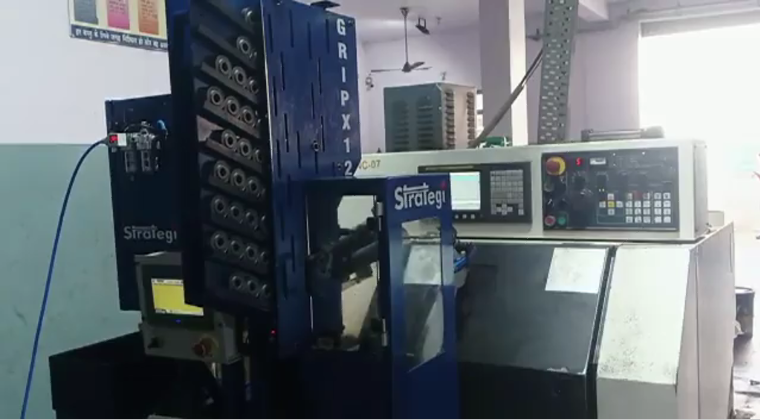
19 Jun AI driven quality control in Manufacturing – How machine learning and computer vision are used to reduce defects and improve consistency
AI driven quality control in Manufacturing – How machine learning and computer vision are used to reduce defects and improve consistency
The manufacturing industry is undergoing a significant transformation with the integration of artificial intelligence (AI), particularly in the realm of quality control. As the demand for zero-defect manufacturing and consistent product quality continues to rise, AI-driven quality control systems are becoming essential tools for modern production environments.
At the heart of this innovation are machine learning algorithms and computer vision technologies, which work together to detect defects, anomalies, and inconsistencies in real-time with unmatched precision. These systems use high-speed cameras and sensors to continuously scan products on the production line, capturing vast amounts of visual data. Machine learning models are trained on this data to recognize acceptable quality parameters and to flag deviations instantly — from surface scratches and incorrect dimensions to improper assembly and color mismatches.
Unlike traditional manual inspection methods, which are time-consuming, subjective, and prone to human error, AI-powered systems offer consistent, repeatable, and highly accurate results. They can operate 24/7, maintain performance without fatigue, and adapt quickly to new product types or changing quality criteria through retraining or real-time learning.
Moreover, these AI systems not only detect defects but also provide actionable insights by identifying root causes and trends over time. This predictive capability allows manufacturers to reduce rework, minimize downtime, and optimize production processes, ultimately leading to higher efficiency and reduced operational costs. Consistent quality across batches also strengthens brand reputation and enhances customer satisfaction.
🔍 Key Points
- AI integrates seamlessly with existing production systems to monitor product quality in real-time.
- Computer vision captures high-resolution images of products and detects anomalies such as cracks, misalignments, or surface defects.
- Machine learning models are trained on historical defect data and learn to improve accuracy over time.
- AI systems can be customized to different industries including automotive, electronics, pharmaceuticals, and food processing.
⚙️ Important Features
- Real-Time Defect Detection
AI systems instantly identify defects on the production line, reducing the chance of faulty products reaching customers. - Automated Inspection Process
Eliminates manual inspection errors, ensuring uniform and objective quality checks. - Predictive Quality Analytics
ML models can forecast potential defect trends and trigger proactive maintenance or process adjustments. - Adaptive Learning
AI models evolve over time by learning from new data, improving their performance with each inspection cycle. - Scalability
Easily deployable across multiple production lines or facilities with minimal downtime. - Data Logging and Reporting
Detailed records help in root cause analysis, compliance, and continuous process improvement.
✅ Pros of AI-Driven Quality Control
- Higher Accuracy and Consistency: Reduces human error and provides consistent inspection standards.
- Increased Throughput: Allows faster inspections without interrupting production speed.
- Cost Efficiency: Decreases scrap, rework, and warranty claims.
- 24/7 Operation: Systems can run continuously without fatigue or the need for breaks.
- Data-Driven Decisions: Facilitates process optimization and quality forecasting using historical and real-time data.
❌ Cons of AI-Driven Quality Control
- High Initial Investment: Advanced sensors, cameras, and computing hardware can be expensive.
- Requires Skilled Workforce: Employees need training to operate, maintain, and fine-tune AI systems.
- Complex Implementation: Integration with legacy systems can be challenging.
- Dependence on Data Quality: Poor or insufficient training data may result in inaccurate defect detection.
🏭 Conclusion
AI-driven quality control is no longer a futuristic concept — it’s a present-day necessity for manufacturers aiming for precision, efficiency, and customer satisfaction. By harnessing the power of machine learning and computer vision, manufacturers can eliminate quality inconsistencies, reduce wastage, and stay ahead in a rapidly evolving market. While initial investments and training may be required, the long-term benefits far outweigh the challenges, making AI a game-changer in the realm of industrial quality assurance.


No Comments